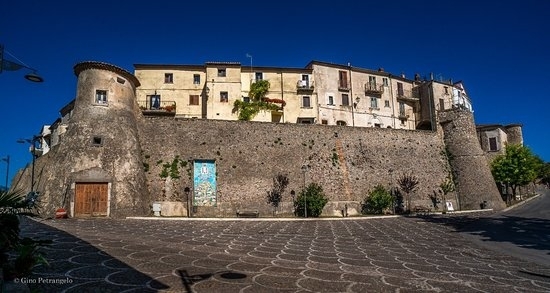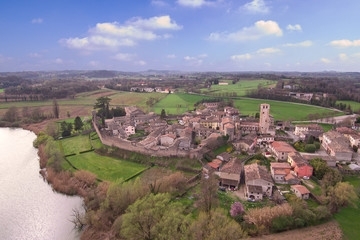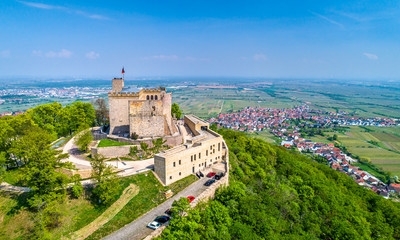Get lost in the Enchanted Alleys of Molise
The Molise villages hold by far the best kept secrets in Italy in a land that is still little known! In fact, Molise is a region of a thousand surprises, and its picturesque villages are among its most precious pearls. From the medieval villages perched on the hills to the ancient coastal towns, every corner of Molise is permeated by a unique magic and a thousand-year history. Discovering Molise means getting lost in its labyrinthine alleys, silent witnesses of centuries of history and tradition. Here Culture and Tradition reign, administered by the authenticity of a people who are proud of their roots, who never fail to celebrate them through traditional and historical festivals. Visit the Botghi of Molise and savor the genuine flavors of Molise cuisine and prepare to fall in love with this land full of wonders!
Stove
Fornelli , the town of towers. Rises on a hill surrounded by the Molise countryside, a village also baptized, "city of oil". to see is the "baronial palace", the mother church of San Michele Arcangelo ", beautiful is also the" church of San Pietro Martire "which still has intact the Renaissance portal and the admirable decorations of the Baroque altar. Olio Fornelli is surrounded by olive trees and produces a fruity and light oil. an oil mill at the entrance to the village testifies to the importance of this product for the local economy. of extinction along the Vandra River.
Sepino
Sepino is the village of Molise that will make you fall in love. Set on the Matese mountains, it has a thousand-year history that you can get to know by walking on the ancient Roman roads. Yes, because there are the ruins of the Roman city of Saepium. here, Basilicata, the forum, the curia, the temples, the spas, the fountains and the mills still remain. architecture and the mighty walls. the historic center is enclosed in the area of the ancient medieval village. still, some towers and 3 gates can be visited; the Southern gate, the Eastern gate and the Corte gate. From Piazza Nazzaro Prisco, visit the church of Santa Cristina where, inside you will find the baptismal font, the inlaid wooden reliquary, the crypt, the bronze busts, numerous scenes of creation and historical writings. in stone, you arrive at the eastern gate, on which the coat of arms of the historic family is still visible. continuing the walk, you will arrive at the southern gate near the church of Santa Maria, you will see the austere monumental fountain, further on you will notice a series of semicircular turrets testifying to the ancient walls of the castle. in the immediate vicinity, there is the famous fountain of the Mascherone. To visit is the convent of the Holy Trinity built in 1519, it was one of the most important monasteries in the region, a place where priests were trained. Prominent is the kiosk, where the statue of St. Francis of Sassisi is placed. Another feature of Sepino are the thermal baths, very famous during the Samnites period. the water of Sepino has 2000 years of history, in addition to being used for thermal treatments, it is also collected upstream to be bottled and sold. at the spa it is possible to carry out treatments such as turkish baths, saunas, whirlpools, massage therapy, mud baths and inhalations. Thanks to the chemical-physical properties of the water, this spa also specializes in muscle recovery for athletes. All that remains is to organize a vacation
Peaches
Peaches: the suggestive nativity scene in the heart of Molise. Its houses are hugging the rock, and from a distance the village resembles a small nativity scene carved into the mountain. Its position, its splendid architecture and unspoiled nature make the village of Pesche unique in its beauty. The houses have developed around a castle, the ancient medieval castle that dominates the valley, once a fortified residence of the noble families. Unfortunately, only a few ruins remain of that manor charm, due to a terrible earthquake that devastated the entire town in 400. Today, the narrow streets that cross the village open onto small squares that offer a spectacular panorama. In addition to the natural beauties, tourists who come to visit Pesche can see in the lower area, the fifteenth-century Sanctuary of Santa Maria del Bagno, a small temple dedicated to the Virgin that takes this particular name due to the tanks fed by a sulphurous water source. which once constituted an important Roman bath in the area.
Very fascinating is also the parish church of the Madonna del Rosario, beautiful, the steps and the main altar.
Monteroduni
Monteroduni , in the province of Isernia, is a small medieval village located on the slopes of the Matese. If you want to spend a couple of days in a place where time seems to have stopped and where you can breathe authentic atmospheres, then Monteroduni is certainly the perfect village. The main attraction is undoubtedly the Pignatelli Castle, open to the public. It has a rectangular shape with four cylindrical towers at the corners and to surround it we find a mighty wall and around this the rest of the country develops. Fundamental attraction is Lake San Vincenzo, the shores of the lake are perfect for spending relaxing days. Another site of interest is the Benedictine Abbey of San Vincenzo, it is an abbey that can be visited.
Monteroduni is known for its typical dishes to be tasted such as: Lamb alla Molisana, Carrot biscuits and Scapece of anchovies, to be tasted only in this special village.Climate, curiosity and advice
Climate: it is a typical mountain climate, able to keep temperatures cool, with warm summers and harsh winters.
Curiosity: Molise is a territory inhabited by man since prehistoric times and remains of Hmo Erectus have recently been found near Isernia.
Tips: a mirror of turquoise water, the Castel San Vincenzo lake is one of the still unknown places in Molise, it is the ideal destination for a picnic in the middle of nature.





